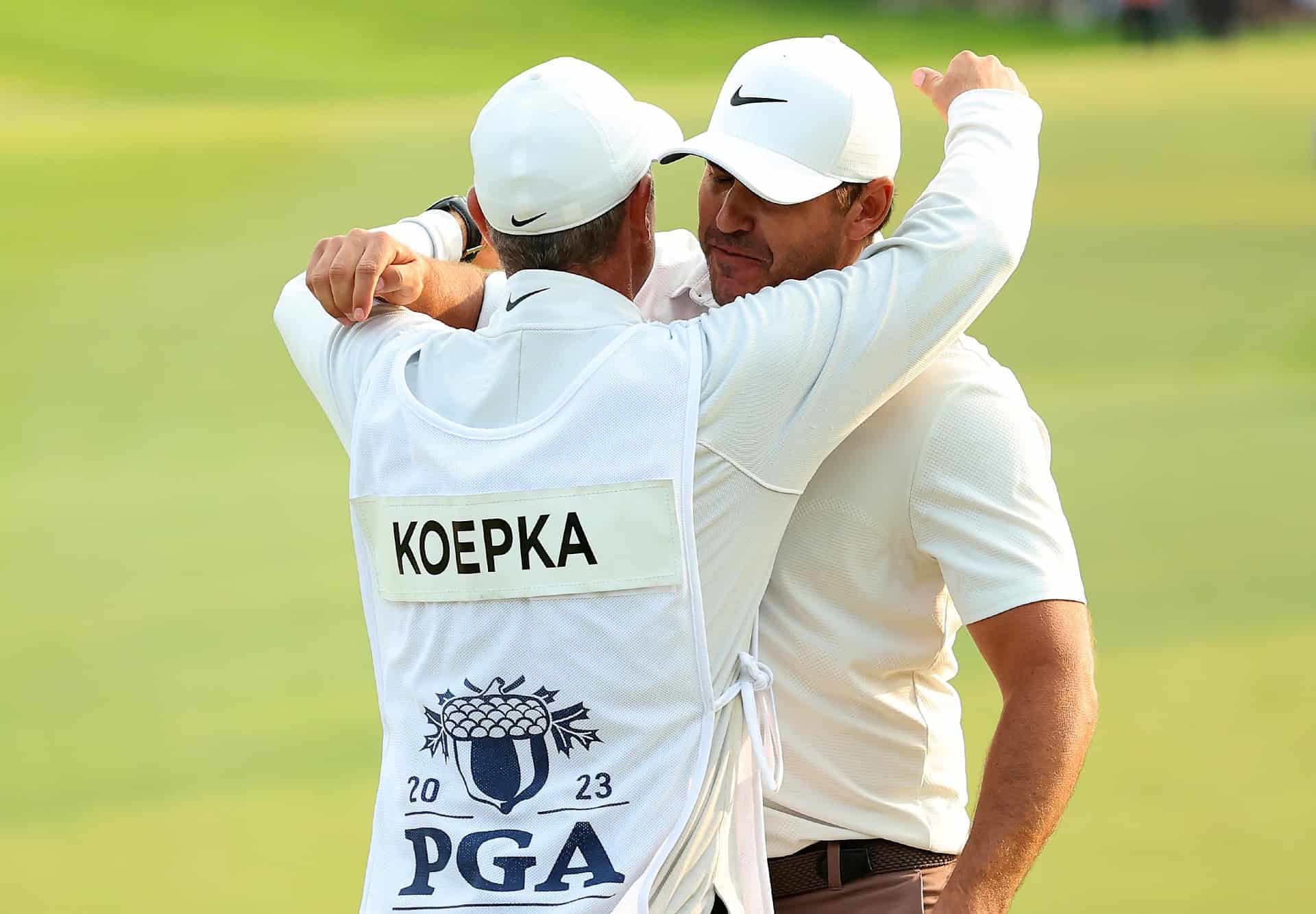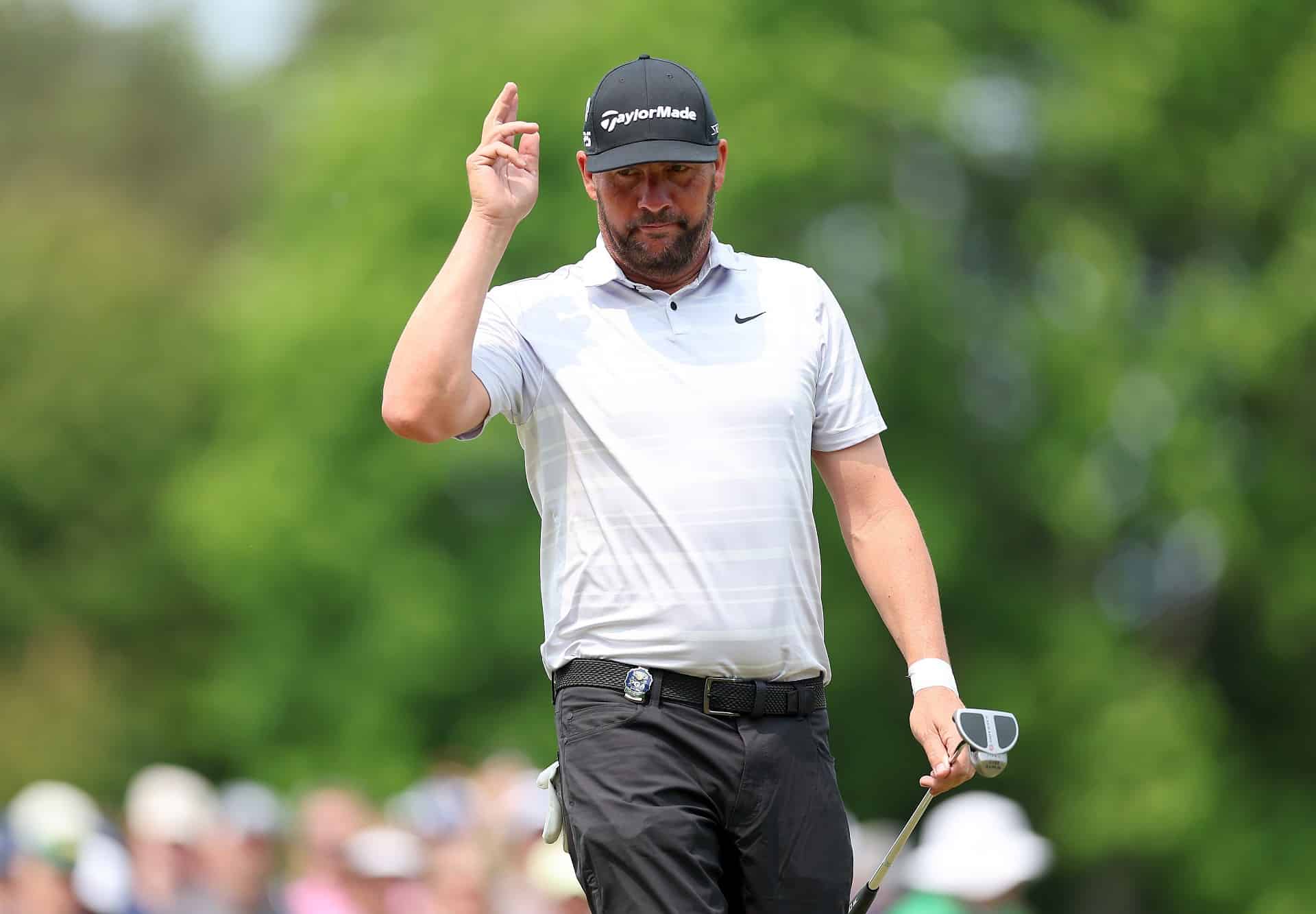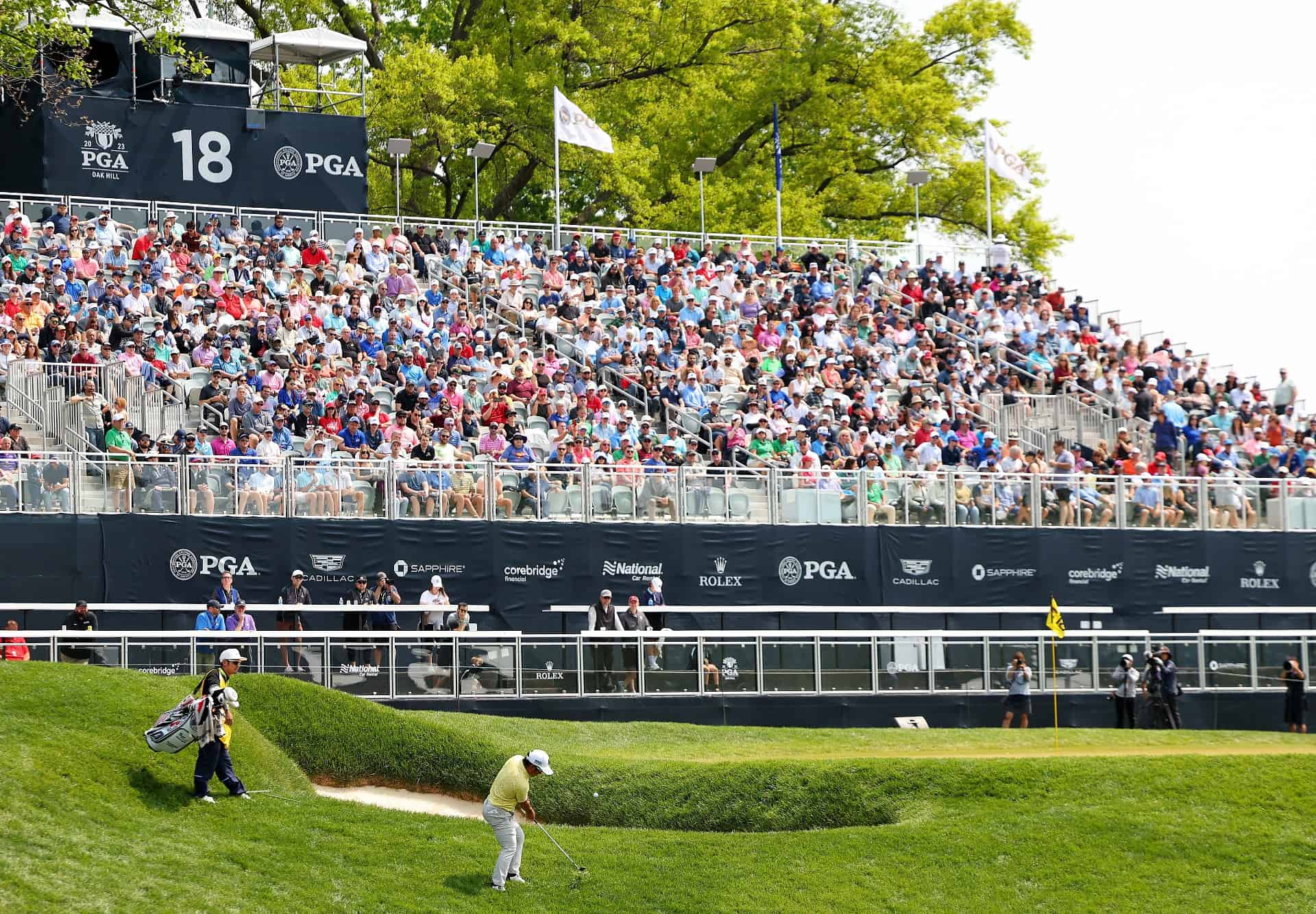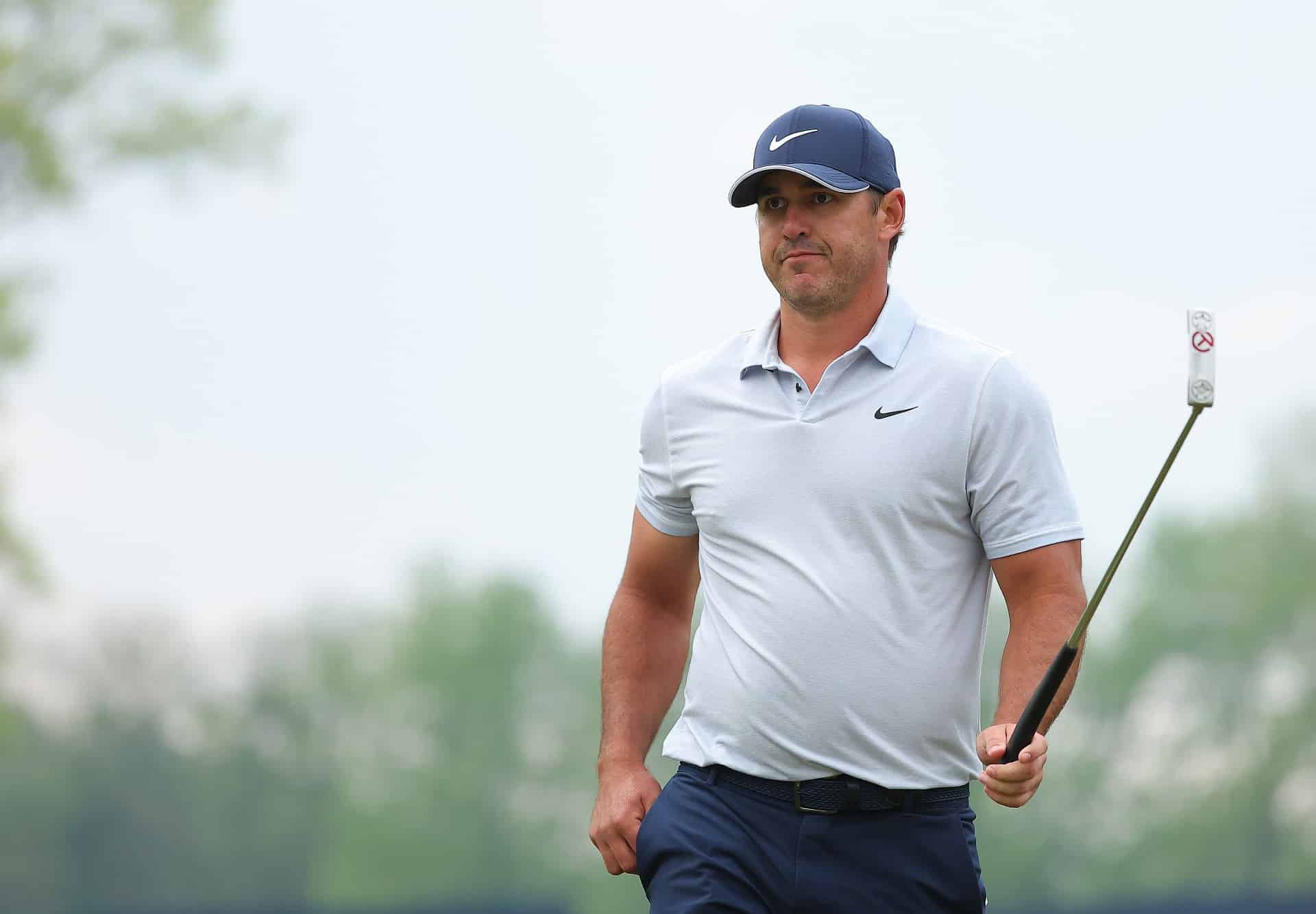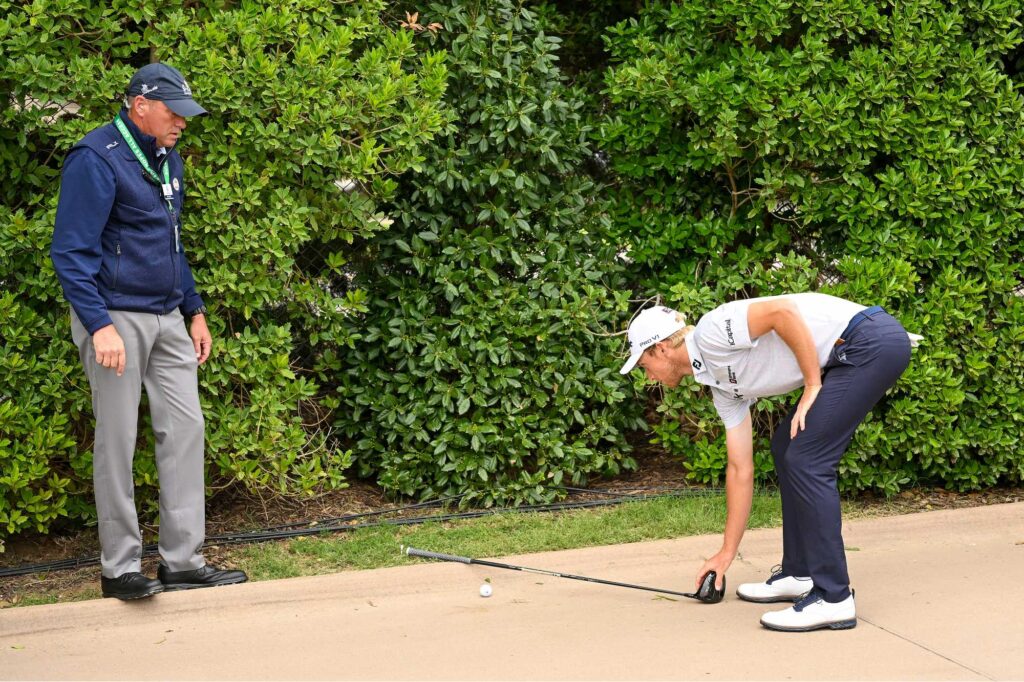
How the rules helped Zalatoris post the craziest bogey you’ll ever see
It was 218 yards of drama all week. For Rory McIlroy, the 6th at Southern Hills spelled death – his double bogey there on Saturday starting the calamitous run that effectively ended his hopes at the 2022 PGA Championship.
It was even worse for Tiger Woods. He made a treble on his way to a third round 79 and a swift exit from Tulsa.
So when Will Zalatoris bludgeoned his tee shot over the putting green and a cart path into bushes during the final round, you’d have been forgiven for thinking his hopes of lifting the Wanamaker Trophy wouldn’t even get to the turn – never mind the playoff where he was eventually pipped by Justin Thomas.
But, after an exchange with two rules officials that lasted the better part of 15 minutes, the American played onto the green and made a great putt to limit the damage to just a bogey.
What on earth went on? Let’s try and break it down…
Zalatoris decided his ball was unplayable
His ball wasn’t far from going out of bounds. But buried in a bush was only slightly better. Zalatoris located his ball, identified it, and decided to take unplayable ball relief for one penalty stroke. Rule 19 gave him three options under the Rules of Golf: stroke-and-distance, back-on-the-line, and lateral relief.
The first meant going back to the tee, so he clearly wasn’t keen. Back-on-the-line required him to go straight back from the hole through the spot of the original ball so that was no help either.
He opted for lateral relief (Rule 19.2c) and had a two-club relief area from the spot of the original ball. That relief area could be in any area of the course but couldn’t be nearer the hole.
He dropped onto a cart path
Zalatoris was thinking ahead. He was looking at the bush, the path, and a temporary immovable obstruction, before he even took relief for the first time. But you’ve got to go through the process first.
After checking two clubs would be enough to extricate his ball from the bush, and measuring out his relief area, Zalatoris dropped onto the cart path.
The ball didn’t stop in the relief area and, as required in Rule 14.3c, Zalatoris dropped again with the same result.
He then had to place the ball on the spot where that second drop first touched the ground. The trouble was, it wouldn’t stay there either.
So, using Rule 14.2e, he tried to replace it on that spot a second time – only for it to move once more. From there, he had to replace the ball on the nearest spot where it would stay at rest.
There was a temporary immovable obstruction in the way
His ball was now on the path, an immovable obstruction, and an abnormal course condition, from which Zalatoris had the option to take relief under Rule 16.1.
But there was also something else getting in the way. In between the dropped ball and the hole was a TV tower.
This was a temporary immovable obstruction and Zalatoris could take relief from line of sight interference from that.
It’s covered in Model Local Rule (F-23), which says interference exists when the TIO is on the player’s line of sight to the hole or the ball is, “within one club-length, measured on an equidistant arc from the hole, of a spot where the TIO would be on the player’s direct line of sight to the hole”.
That’s why, in conversation with an official, you heard the referee talking about the “corridor”.
Zalatoris moved clear from the TIO, took relief in a one club-length relief area by dropping and his ball was still on the path.
He played the ball from the cart path
Zalatoris’ ball was now stuck in a seam on the path and he decided to play it from there. Given we’ve already established this was an abnormal course condition, why didn’t he take free relief?
It’s because Rule 16.1 demands that the reference point is the nearest point of complete relief from interference from the condition. Where was that? You’ve got it. It would have been off the path and back towards the bush.
He obviously wasn’t returning there. And so he struck the ball from the path, hit it sweetly to about 10 feet, and somehow holed the putt for one of the craziest bogeys you’ll ever see.
Subscribe to NCG
Steve Carroll

A journalist for 25 years, Steve has been immersed in club golf for almost as long. A former club captain, he has passed the Level 3 Rules of Golf exam with distinction having attended the R&A's prestigious Tournament Administrators and Referees Seminar.
Steve has officiated at a host of high-profile tournaments, including Open Regional Qualifying, PGA Fourball Championship, English Men's Senior Amateur, and the North of England Amateur Championship. In 2023, he made his international debut as part of the team that refereed England vs Switzerland U16 girls.
A part of NCG's Top 100s panel, Steve has a particular love of links golf and is frantically trying to restore his single-figure handicap. He currently floats at around 11.
Steve plays at Close House, in Newcastle, and York GC, where he is a member of the club's matches and competitions committee and referees the annual 36-hole scratch York Rose Bowl.
Having studied history at Newcastle University, he became a journalist having passed his NTCJ exams at Darlington College of Technology.
What's in Steve's bag: TaylorMade Stealth 2 driver, 3-wood, and hybrids; TaylorMade Stealth 2 irons; TaylorMade Hi-Toe, Ping ChipR, Sik Putter.





